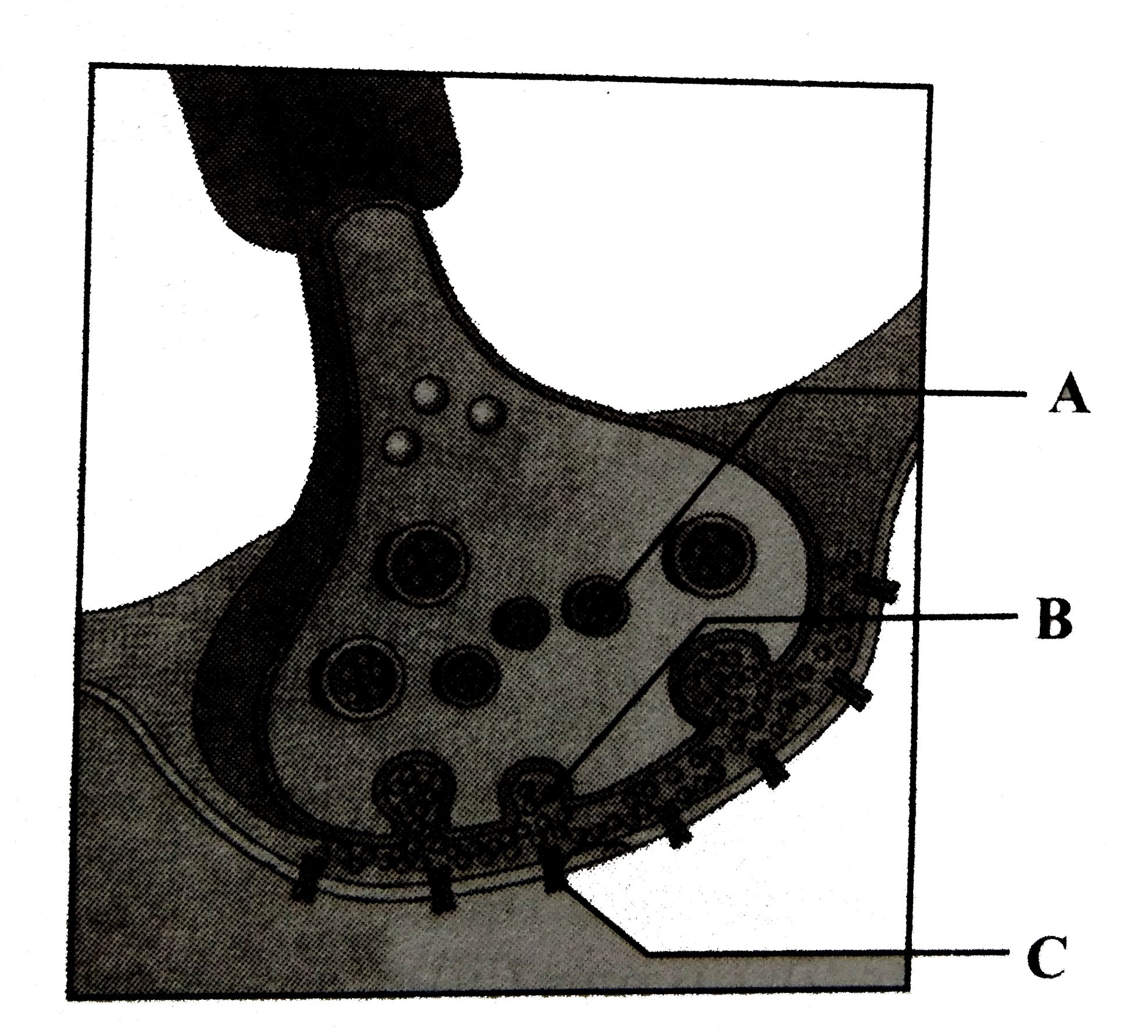Chemicals which are released at the synaptic junction are called :
hormones
neurotransmitters
cerebrospinal fluid
lymph
The correct Answer is:B
Step-by-Step Solution:
1. Understanding the Synaptic Junction: The synaptic junction is the point where two neurons communicate with each other. It is crucial for transmitting signals throughout the nervous system.
2. Identifying the Chemicals Involved: At the synaptic junction, certain chemicals are released from the axon terminal of one neuron. These chemicals play a vital role in transmitting signals to the next neuron.
3. Function of These Chemicals: The chemicals released at the synaptic junction act as signals that facilitate communication between neurons. They help in transferring information from one neuron to another.
4. Naming the Chemicals: The specific chemicals that are released at the synaptic junction are known as neurotransmitters. They bind to receptors on the dendrites of the receiving neuron, allowing the signal to continue.
5. Evaluating the Options: The question may provide multiple-choice answers. The correct answer to the question regarding the chemicals released at the synaptic junction is "neurotransmitters."
6. Conclusion: Therefore, the answer to the question is that the chemicals which are released at the synaptic junction are called neurotransmitters.
Topper's Solved these Questions
- NEURAL CONTROL AND CO-ORDINATION Book:ICSEChapter:NEURAL CONTROL AND CO-ORDINATION Exercise:TEST YOUR PROGRESS ( OBJECTIVE TYPE QUESTIONS ) (Fill in the blanks with appropriate words.)
Explore 14 Videos
- NEURAL CONTROL AND CO-ORDINATION Book:ICSEChapter:NEURAL CONTROL AND CO-ORDINATION Exercise:TEST YOUR PROGRESS ( OBJECTIVE TYPE QUESTIONS ) (State whether the following statements are true or false .)
Explore 9 Videos
- MORPHOLOGY OF FLOWERING PLANTS Book:ICSEChapter:MORPHOLOGY OF FLOWERING PLANTS Exercise:NCERT TEXTBOOK QUESTIONS WITH SOLUTIONS
Explore 25 Videos
- NEURAL CONTROL AND COORDINATIONBook:ICSEChapter:NEURAL CONTROL AND COORDINATIONExercise:(Review question) long answer
Explore 20 Videos
Similar Questions
Knowledge Check
Assertion : The chemicals showing green colour in most their reactions are called green chemicals .
Reason : Green chemicals are friendly to the enviroment.AIf both Assertion and Reason are CORRECT and Reason in the CORRECT and Reason is the CORRECT explanation of the Assertion.BIf both Assertion and Reason are CORRECT but Reason is not the CORRECT explanation of the Assertion .CIf Assertion is CORRECT but Reason is INCORRECT .DIf Assertion is INCORRECT but Reason is CORRECTThe given diagram shows axon terminal.Select the option that correctly matches the steps in transmission of impulses (list i-vii) with the labellings (A-C) in diagram.

(i)Chemicals called neurotransmitters are released in the synaptic cleft through ion channels.
(ii)When an impulse arrives at the axon terminal, it stimulates the movement of synaptic vesicles.
(iii)Neurotransmitters are endocytosed into the neurons.
(iv)The ions channels close with the binding of neurotransmitters to their specific receptors vesicles.
(v)Synaptic vesicles move towards the membrane where they fuse with the plasma membrane.
(vi)Neurotransmitters are released in the synaptic cleft.
(vii)The released transmitters bind to their specific receptors on post-synaptic membraneAA B C(ii) (iii) (i)BA B C(v) (vi) (iv)CA B C(ii) (vi) (vii)DA B C(v) (iii) (iv)Synaptic vesicles are :
Aat the ends of dendrites and axonsBat the ends of axons onlyCalong the length of all long fibresDall of the above
Which of the following chemical is a not released by the mast cells during allergic reactions
View SolutionThe substance which decreases the rate of a chemical reaction in called a/an:
View SolutionJet aeroplanes releases pollutants in air called
View SolutionThe chemical present in synaptic bulb is
View SolutionWhat will happen if the post - synaptic receptors in a chemical synapse are removed ?
(a) Synaptic transmission will be faster
(b) Synaptic transmission will become slower
(c ) Synaptic transmission will be not occur
(d) Synaptic transmission will be unaffected
View Solution